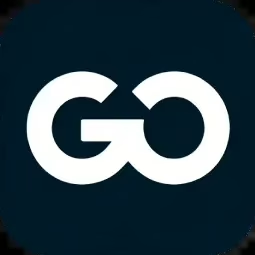When it comes to the world of tariffs and tech, it’s a little like mixing oil with water—sometimes they just don’t blend well! As governments globally adjust their trade policies, especially in the ever-evolving tech industry, the implications can feel as perplexing as a cat trying to operate a smartphone. But fear not! We’re here to explore this tangled web of tariffs and technology with a sprinkle of humor.
The Tariff Tango: A Dance of Dollars
Let’s face it: tariffs are the complicated dance partners of international trade. They can either lead you gracefully across the floor or trip you up at every turn. The recent shifts in global tariff policies have left many in the tech sector scratching their heads—and perhaps reaching for a glass of something strong.
With trade tensions heating up, particularly between major players like the U.S. and China, tech companies are feeling the heat. Suddenly, what once seemed like a smooth waltz through international markets now resembles an awkward shuffle. Companies find themselves re-evaluating supply chains faster than you can say “new iPhone release.” The result? Increased production costs that could eventually lead to higher prices for consumers—because who doesn’t love paying more for their gadgets?
The Ripple Effect on Innovation
But wait, there’s more! The impact of tariffs isn’t just about dollar signs; it also stirs the pot of innovation within the tech world. With rising costs, many companies may choose to cut corners—or worse, cut back on research and development budgets. This scenario could stifle creativity faster than your uncle’s jokes at Thanksgiving dinner.
Imagine if your favorite tech giant suddenly decided that investing in groundbreaking AI technology was too risky because of tariff uncertainties. Innovation might take a backseat while companies scramble to adjust their business models. The irony here is that while tariffs aim to protect domestic industries, they might inadvertently suffocate the very innovations that keep those industries thriving!
The Consumer’s Conundrum
As we navigate these tumultuous waters of tariffs and tech, consumers are left in a bit of a pickle. On one hand, we want to support our local businesses, but on the other hand, we don’t fancy paying an arm and a leg for our next gadget. It’s like being asked to choose between chocolate cake and carrot sticks—both are appealing but only one feels like a treat.
The good news? Some companies are getting creative with their strategies. Instead of folding under pressure, many are looking to diversify their supply chains. This means they might source components from various countries rather than relying solely on a single region—kind of like building a tech buffet instead of putting all your eggs in one basket.
What Lies Ahead for Tariffs and Tech?
The future remains uncertain as policymakers continue to deliberate over tariffs’ role in shaping international trade dynamics. Will we see more collaboration or further conflict? Only time will tell! But as stakeholders in this grand game of chess (or perhaps checkers), it’s crucial for both businesses and consumers to stay informed.
For tech companies, staying agile is key. As they navigate these treacherous waters, those who adapt quickly might just come out ahead—like a contestant on “Survivor” who forms alliances and knows when to play their hidden immunity idol.
Your Thoughts?
As we ponder the intricate relationship between tariffs and tech, we invite you to share your thoughts! How do you think these changes will shape our future gadgets? Will we ever see affordable tech again? Join the conversation below!
A special thank you to Wired for their original insights into this topic! For more information, check out their article here.
Exploring Tariffs and the Tech Landscape
Tariffs can significantly affect not only pricing but also the overall direction of the tech landscape. Recent trends show that some companies are actively lobbying for tariff revisions that could ease the financial burden on consumers and promote innovation. For instance, a specialized tariff break could lead to a resurgence in domestic manufacturing, which supports a volatile labor market.
These movements are becoming essential as various sectors realize that stability brings confidence to investors and consumers alike.
The tech world is now witnessing a shift similar to that of the automotive industry, where companies are compelled to innovate quickly to maintain a competitive edge in light of fluctuating tariffs.
Final Insights on Tariffs and Tech Relations
As tariffs continue to evolve, one thing remains clear: the relationship between tariffs and the tech industry is more critical than ever. Stakeholders must recognize that while tariffs serve a purpose, clarity and thoughtful policies can pave the way for a thriving tech environment.
What are your experiences with tariffs affecting tech purchases? Let us know below!
For further reading on technological advancements and their interplay with international policies, check out related articles like After semiconductors, semimetals might be the next big thing as the tech industry looks for a replacement for ubiquitous copper or Bitcoin and Ethereum ETF Flows Bearish Ahead of Donald Trump’s Latest Tariffs.

